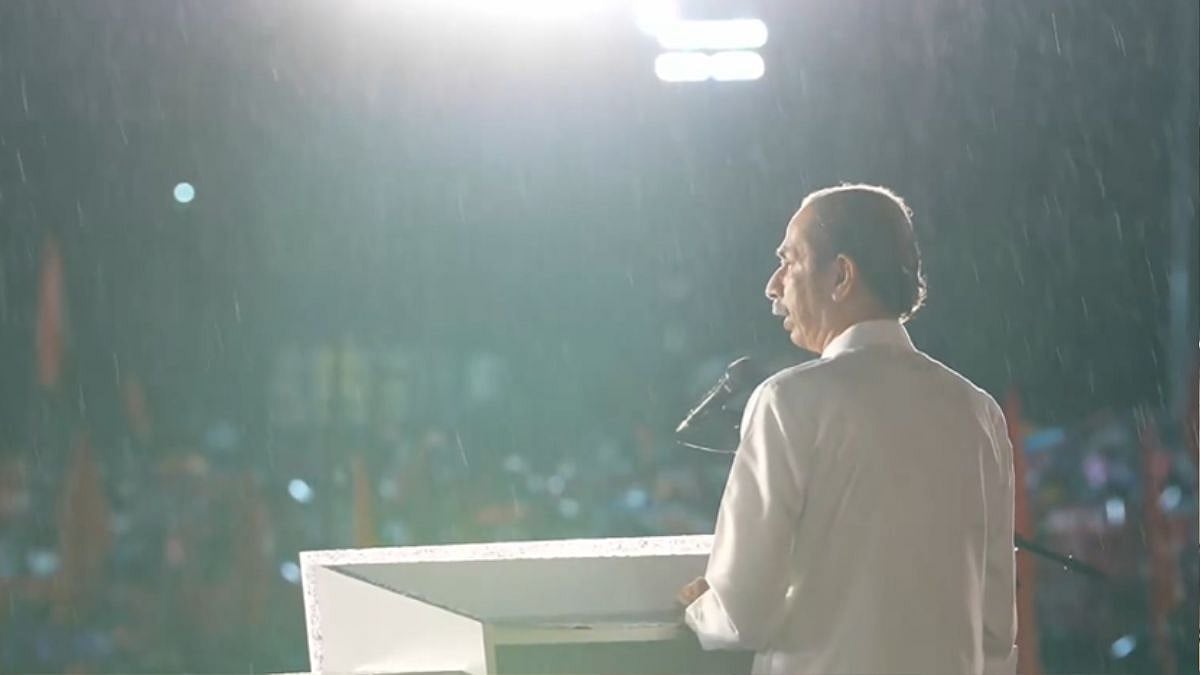India is dangerously close to the Hindu rate of growth, said Raghuram Rajan a few days ago. He was being unduly alarmistic besides being loftily condescending and facetious. To be sure, he wasn’t the first to use the word “Hindu” in a derogatory sense. That dubious honour goes to Prof Raj Krishna, the economist who coined that not-so-amusing adjective in 1978. “The Hindu Rate of Growth, a polemical device intended to draw attention to the meagre 3.5% growth rate experienced by India over the long run. The fact that this rate of growth remained steady through changes in governments, wars, famines, and other crises, made it for him an inherently cultural phenomenon — hence the name,” according to The New Oxford companion to Economics in India.
In fact, he and his apologists have rationalised this derogatory prefix as innocuous and innocent. A cultural phenomenon? Pure hogwash. If anything, it was a clever and disingenuous attempt to paint Hindus as slow, indolent, smugly self-satisfied and needlessly laidback. It is surprising that the avowedly Hindutva political parties in India haven’t taken strong umbrage and exception to the continued usage of this term both in India and outside by many people. Perhaps their indifference to this slight speaks volumes of economics not being central to their scheme of things, charter or poll promises or ideology. Be that as it may.
Raghuram Rajan’s remark came after the National Statistical Office (NSO) released its report last month showing a sequential slowdown in the latest estimate of national income. The country’s GDP growth was seen to slow down to 4.4% in the third quarter (October-December) against the 6.3% in the second quarter (July-September). The latest October-December Indian GDP numbers suggest slowing growth from the heady numbers in the first half of the year... The RBI projects an even lower 4.2% for the last quarter of this fiscal, he went on to say. He blamed subdued private sector investment, high interest rates and a slowdown in global growth as the factors responsible for the impending slowdown.
Rajan forgets that in the globalised world where the Indian economy draws a large dose of financial sustenance from the US, the contagion effect is inevitable. The US Fed has been hiking the interest rates; willy-nilly the RBI too has to so as to arrest the flight of capital from India. Remember the famous quip — Nasdaq sneezes and India catches cold — in this regard. In any case, any economic prognosis is not cast in stone. A seminal economic reform can change the mood of gloom harboured by economists like Rajan. Remember the same NSO report says reveals that the per capita income has almost doubled to Rs 1.72 lakh in the last 9 years under the Modi government. The per capita income was Rs 86,647 in 2014-15 — the year BJP stormed to power with a clear majority. Statistics, like holy scriptures, can be quoted to suit one’s viewpoint, said an oracle once.
To be sure, the impressive per capita income hides a huge bit of inequity in distribution of income. The new Oxfam report says India's top 1% owned more than 40.5% of its total wealth in 2021. In 2022, the number of billionaires in the country increased to 166 from 102 in 2020, the report said. Meanwhile, it added that the poor in India "are unable to afford even basic necessities to survive". That seems to be a bit exaggerated. While Pareto’s law — 80% of the resources are cornered by 20% of the people and vice-versa — operates with vengeance even in the US, the Modi government has undeniably done its bit to make life easier and smoother for the poor like its targeted welfare programmes including PM Awas Yojana under which the economically weaker section of the populace are being built houses at affordable rates with interest subvention thrown in.
Lag indicators also tell their own story. Global forecasting agency S&P Global Mobility had estimated in December 2022 that the Indian light vehicle sales for 2022 would see a growth of over 22%, to 4.4 million units, whereas the sales in the Japanese market are expected to slip to 4.2 million units. To be sure, a large part of the surge in car sales may be attributable to the pent up demand factor — the suppressed splurge urge during Covid times being unleashed now — but the truth is people are more confident than Rajan.
Lead indicators of economic activity point to sustained resilience of the Indian economy in an uncertain and increasingly hostile global environment,” the RBI said. The heightened allocation for Railways by budget 2023 at a record level of Rs 2.40 lakh crore promises to give massive employment opportunities to our youth. Railways indeed is the growth engine together with roads. The accent on infrastructure (Rs 10 lakh crore allocated to it including for railways) is the most promising lead indicator. One only hopes the allocations translate into actual investments at a jet speed.
The impressive GST collections of Rs 1.5 lakh crore every month points not only to the sustained mainstreaming of the economy but also points to its revival. So, let us not be unduly pessimistic. And yes, let us not use the facetious adjective “Hindu” to describe an economic parameter and indicator. India belongs as much to Hindus as to Christians, Muslims and Sikhs. Let us not in the name of light-heartedness infuse a communal element in the economic discourse.
S Murlidharan is a freelance columnist for various publications and writes on economics, business, legal, and taxation issues












